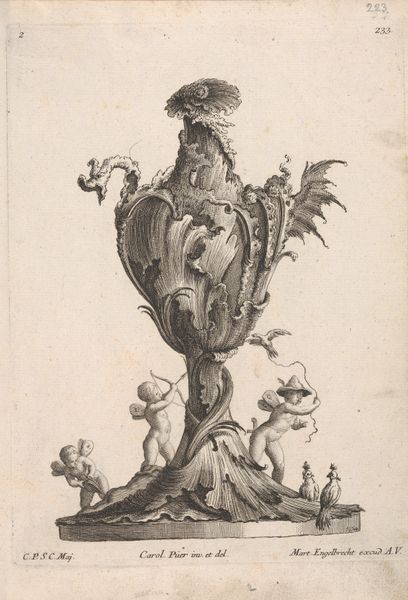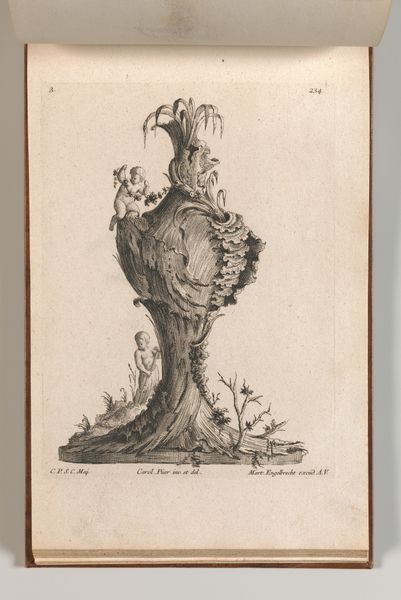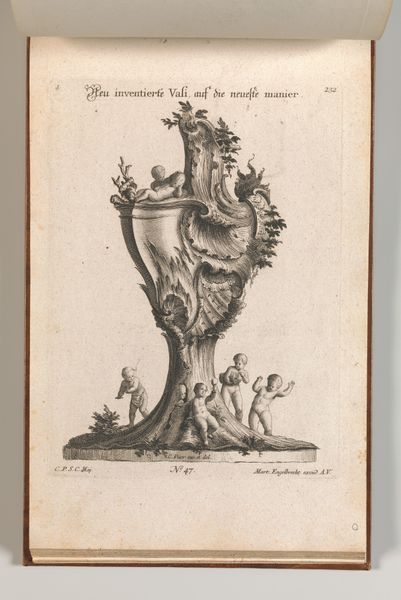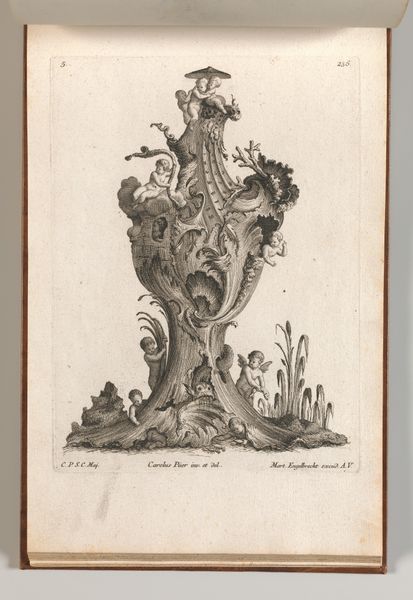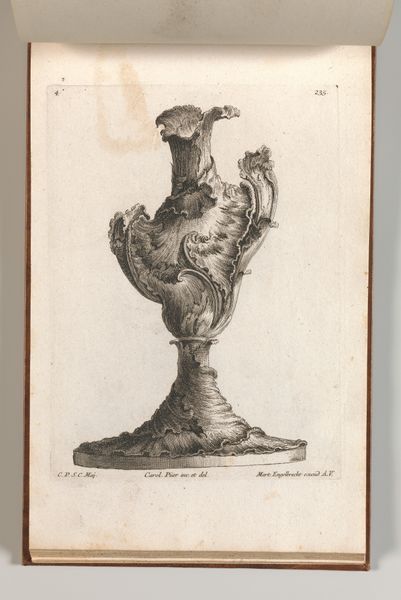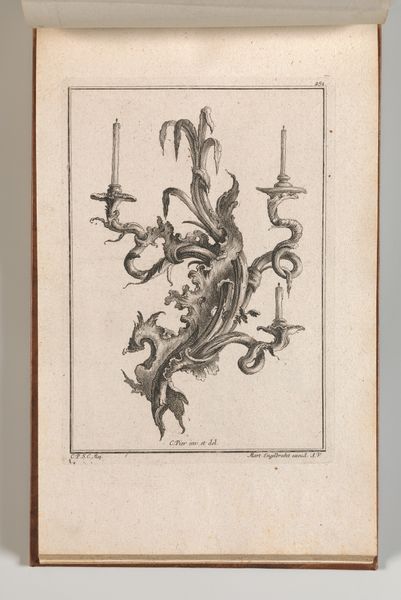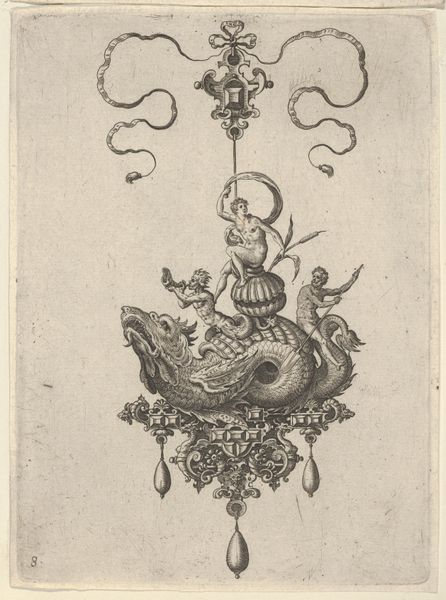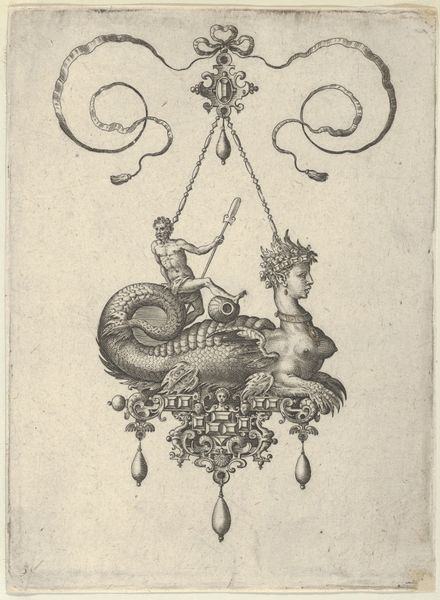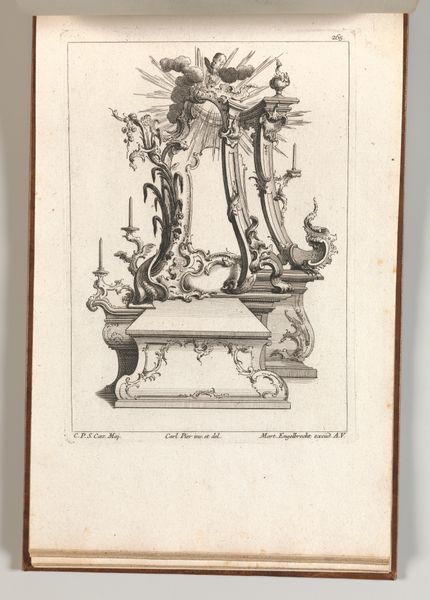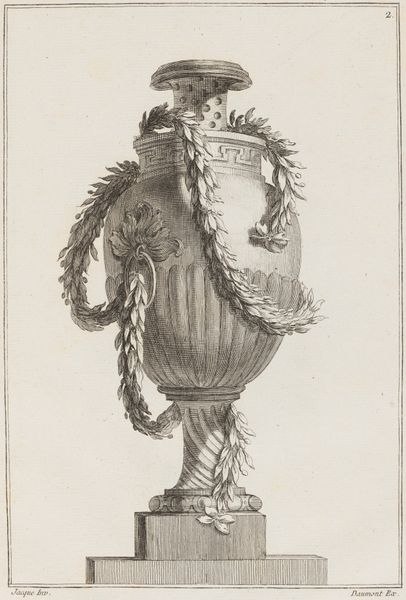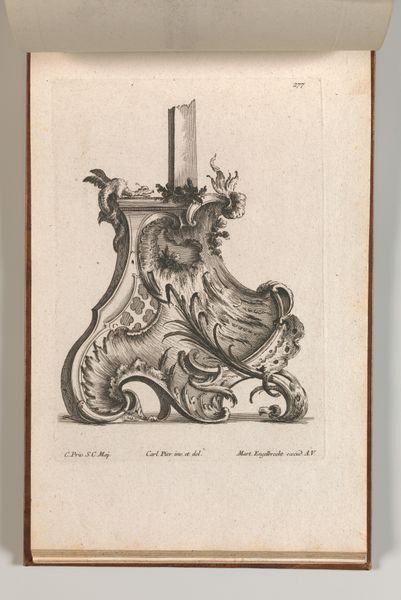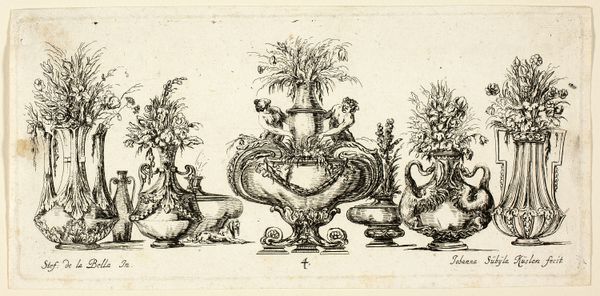
Design for a large Vase or Ewer representing 'Air', Plate 2 from: 'Neu inventierte Vasi auf die neueste manier' 1745 - 1755
0:00
0:00
drawing, print, engraving
#
drawing
#
baroque
# print
#
vase
#
figuration
#
decorative-art
#
engraving
Dimensions: Overall: 8 7/16 × 13 3/4 in. (21.5 × 35 cm)
Copyright: Public Domain
Curator: Well, here we have “Design for a large Vase or Ewer representing 'Air', Plate 2 from: 'Neu inventierte Vasi auf die neueste manier'” an engraving by Jacob Gottlieb Thelot, dating roughly between 1745 and 1755. Editor: My goodness, it’s quite a florid thing, isn’t it? I’m struck immediately by how ornate and extravagant it is. Definitely wouldn’t look out of place at Versailles! Curator: Indeed! The Baroque period prized ornamentation and grandeur. These designs often circulated as prints, influencing taste and production far beyond the courts. You have to remember the culture of collecting was well-rooted in aristocratic circles and engravings helped disseminate styles across the continent. Editor: The vase itself almost feels secondary to the symbols woven into its design. I’m seeing putti with bows and arrows – perhaps representing Zephyrs, the gentle west winds of love and renewal. What do you make of the dragons? And the overall tempestuousness of its lines? Curator: The dragon motifs most certainly nod toward the volatile nature of air – think of storms, tempests, the uncontrollable winds. Air, after all, can be both gentle and destructive. These elaborate vase designs, although somewhat impractical, reflected a broader fascination with natural philosophy, even incorporating it into décor. Editor: Right, the dragons symbolize volatility, a counterpoint to the putti's tenderness. But how interesting to render “air” so concretely! It makes me consider air's perceived importance, moving from a literally vital substance to something almost architectural, laden with meaning. It's heavy with intention despite being meant to evoke that which is most intangible. Curator: Precisely! This wasn’t just about aesthetics, but making complex symbolic statements through material culture, reaffirming hierarchies and intellectual ideas within the spaces these objects would inhabit. Editor: Looking closer, the whole base looks quite unstable and yet that instability seems deliberate, like air currents are a metaphor for the dynamism of life. The baroque liked things to move… visually and conceptually. Curator: It seems that rendering this dialogue about this design and era gave rise to something unexpectedly evocative of its themes: motion and volatility, solidified, paradoxically, in black and white print! Editor: A wonderful and concise summation, it truly reflects the way that history allows one to view what had appeared a static design, spring vividly to life!
Comments
No comments
Be the first to comment and join the conversation on the ultimate creative platform.

